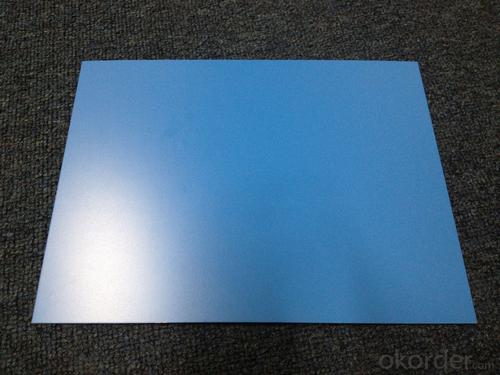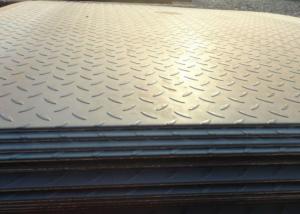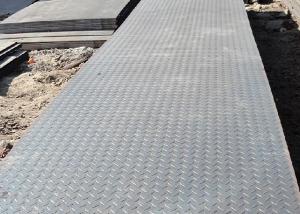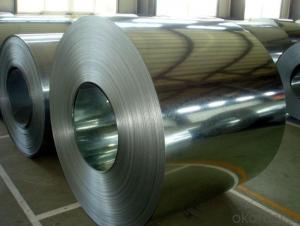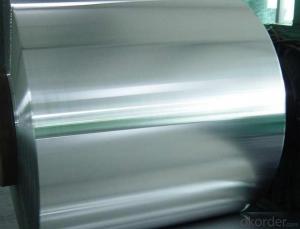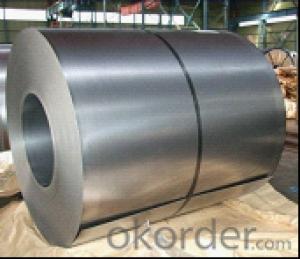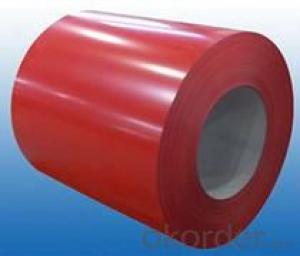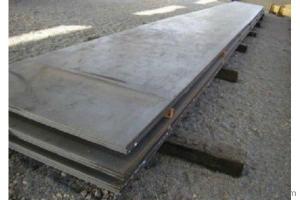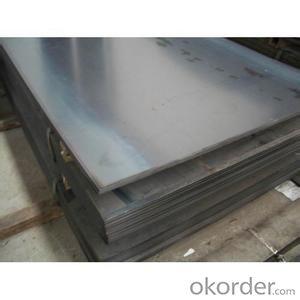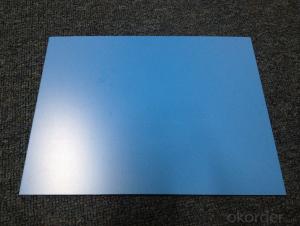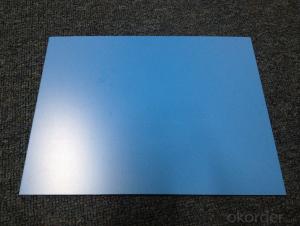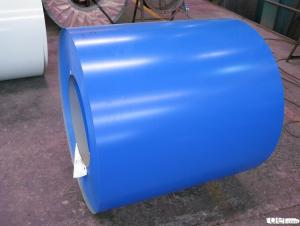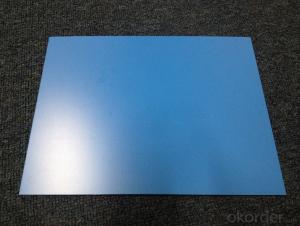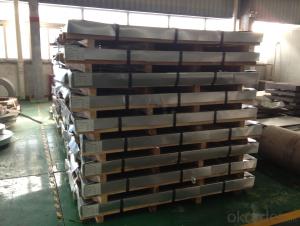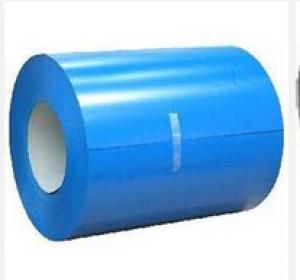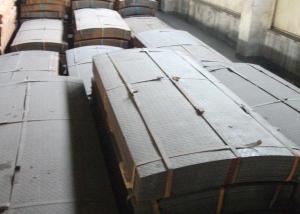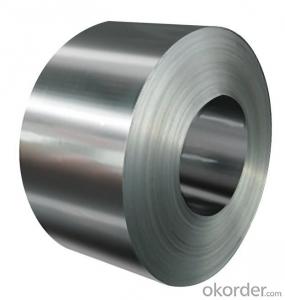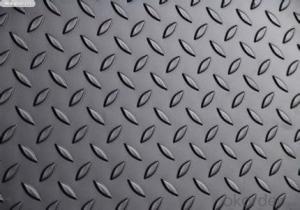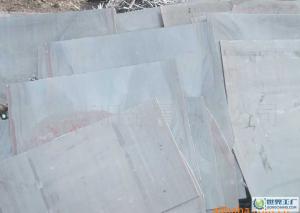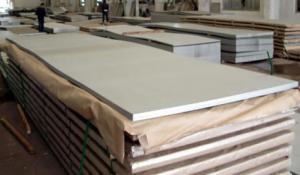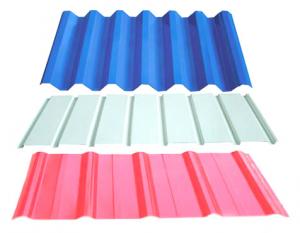HF PRE-PAINTED ALUZINC STEEL SHEET
- Loading Port:
- Tianjin
- Payment Terms:
- TT OR LC
- Min Order Qty:
- -
- Supply Capability:
- 12000 m.t./month
OKorder Service Pledge
OKorder Financial Service
You Might Also Like
PRE-PAINTED ALUZINC STEEL SHEET
THICKNESS:0.18mm-1.5mm
WIDTH:900mm-1250mm
COATING MASS:AZ30-AZ180
PAINT:PE、HP、HDP、PVDF、SMP、MATT、PVDF
COLOR:RAL Scale
COIL INNER DIAMETER:508mm/610mm
COIL WEIGHT:3mt-7mt
BASE MATERIAL:Hot-dip Aluzinc Steel
Cold rolled plate of color coating steel plate
From the color plate cold rolling board production, has smooth and beautifulappearance, processing performance and has cold rolling board; but any tinyscratch the surface coating will put cold-rolled base plate is exposed in the air,so that the exposed iron quickly generated red rust. Therefore, this kind ofproduct can only be used for less demanding the temporary isolationmeasures and indoor materials.
Hot dip galvanized color coating steel plate
The organic paint coating on hot dip galvanized steel sheet on products for hotgalvanizing and coating plate. Hot dip galvanized Caitu besides the protective effect with zinc, organic coating on the surface also played isolation protection,prevent rust role, the service life is longer than the heat galvanized plate. The zinc content of hot dip galvanized substrate for general 180g/m2 (double),building external hot galvanized substrate galvanized weight up to 275g/m2.
Hot-dip zinc coated board
According to the requirement, also can use hot aluminium zinc plate as coating substrates (55%AI-Zn and 5%AI-Zn).
Electro galvanized and color coated sheet
Electricity galvanized plate as a substrate, coated with organic coating bakingincome products for electric galvanized Caitu, because the electric galvanized plate the zinc layer is thin, often containing zinc quantity is 20/20g/m2, theproduct is not suitable for production use in outdoor walls, roof. But because of its beautiful appearance and excellent processing performance, so it can be mainly used in household appliances, audio equipment, steel furniture, interior decoration, etc..
- Q: Are steel sheets suitable for automotive body panels?
- Indeed, automotive body panels can be effectively constructed using steel sheets. The automotive industry heavily relies on steel due to its exceptional strength and durability. Steel sheets possess the ability to endure the various pressures and strains encountered by body panels during vehicle operation, including impacts, vibrations, and adverse weather conditions. Moreover, steel can be effortlessly molded into intricate shapes, making it an optimal material for designing diverse body panel components. Furthermore, when adequately treated and coated, steel exhibits remarkable resistance against corrosion, guaranteeing the longevity and aesthetic appeal of the vehicle. In conclusion, steel sheets possess all the essential characteristics necessary for automotive body panels, rendering them a fitting choice for manufacturers.
- Q: How do steel sheets handle expansion and contraction?
- Steel sheets handle expansion and contraction in a predictable and controlled manner due to their unique properties. Steel is known for its high strength and durability, which allows it to withstand the forces exerted during expansion and contraction without losing its structural integrity. When steel sheets are exposed to high temperatures, such as during welding or in extreme environmental conditions, they tend to expand. This expansion occurs because heat causes the steel molecules to move more rapidly, resulting in an increase in size. However, steel has a relatively low coefficient of thermal expansion, meaning it expands less compared to other materials like concrete or wood. This property makes steel a preferred choice in various applications where dimensional stability is crucial. To handle expansion, steel sheets are often designed with expansion joints or gaps that allow for movement. These joints can be found in structures like bridges, buildings, or pipelines. These gaps are strategically placed to accommodate the anticipated expansion and contraction of the steel sheets without causing any damage or deformation. Additionally, steel's ability to contract is equally important. When exposed to lower temperatures, steel sheets contract or shrink. This contraction is typically less noticeable compared to expansion but still needs to be considered in engineering designs. The contraction of steel is generally not a concern, as it is within the acceptable limits and does not compromise the structural integrity of the material. Overall, steel sheets are engineered to handle expansion and contraction effectively. The low coefficient of thermal expansion and the presence of expansion joints allow steel to accommodate temperature fluctuations without causing significant stress or deformation. This makes steel a reliable and versatile material for various industries, including construction, manufacturing, and infrastructure.
- Q: Can steel sheets be used in architectural applications?
- Yes, steel sheets can be used in architectural applications. Steel sheets are versatile, durable, and offer structural integrity, making them suitable for various architectural uses such as roofing, cladding, and facades. Additionally, steel sheets can be easily shaped, allowing for creative and unique designs in architectural projects.
- Q: What is the process of galvalume coating on steel sheets?
- The process of galvalume coating on steel sheets involves a combination of hot-dipping and alloying. First, the steel sheets are thoroughly cleaned to remove any impurities. Then, they are immersed in a bath of molten zinc-aluminum alloy, typically containing around 55% aluminum, 43.5% zinc, and 1.5% silicon. During the immersion, a metallurgical reaction takes place between the steel and the alloy, resulting in the formation of a thin layer of aluminum-zinc alloy on the surface of the steel sheets. This layer provides excellent corrosion resistance to the steel, protecting it from rust and other forms of degradation. After the immersion, the coated steel sheets are then subjected to a cooling process, usually through air or water quenching. This solidifies the aluminum-zinc layer, ensuring its adhesion to the steel substrate. The final galvalume-coated steel sheets are now ready for use in various applications, such as roofing, siding, and automotive parts, offering a long-lasting and durable protection against the elements.
- Q: Can steel sheets be bent or curved?
- Yes, steel sheets can be bent or curved. Steel is a malleable material, meaning it can be easily shaped or formed without breaking or cracking. This property allows steel sheets to be bent or curved into various shapes and angles, depending on the desired outcome. The process of bending or curving steel sheets typically involves the use of specialized tools such as press brakes or rollers. These tools apply force to the steel sheet, causing it to bend or curve according to the desired specifications. This ability to manipulate steel sheets makes them highly versatile and widely used in industries such as construction, automotive, and manufacturing.
- Q: Can steel sheets be used in the construction of bridges?
- Yes, steel sheets can be used in the construction of bridges. Steel is a commonly used material in bridge construction due to its many advantageous properties. Steel sheets provide high strength and durability, making them suitable for withstanding heavy loads and harsh weather conditions. They are also flexible, allowing for easier fabrication and installation. Additionally, steel sheets can be easily joined together using welding or bolting, making them ideal for constructing large structures like bridges. Overall, steel sheets offer a cost-effective and reliable solution for bridge construction.
- Q: Can steel sheets be used for modular furniture?
- Yes, steel sheets can be used for modular furniture. Steel is a versatile and durable material that can be easily shaped and formed into various furniture designs. It offers strength and stability, making it suitable for creating modular furniture pieces that can be easily assembled, disassembled, and reconfigured. Additionally, steel sheets can be finished with different coatings or paints to enhance their aesthetic appeal and protect against corrosion.
- Q: What is the price range of steel sheets?
- The cost of steel sheets can differ based on various factors, including the steel's type and grade, the sheet's thickness and size, and the prevailing market conditions. Typically, steel sheets can be priced between $0.60 and $1.50 per pound. Nevertheless, it is crucial to note that these figures are only approximate and subject to frequent modifications due to fluctuations in the steel market and other economic elements. To obtain the most precise and current pricing details for steel sheets, it is recommended to consult local suppliers or utilize online platforms.
- Q: Can steel sheets be used for water storage tanks?
- Yes, steel sheets can be used for water storage tanks. Steel is a durable material that can withstand the weight of water and provide adequate strength and stability for storing large quantities of water. Additionally, steel tanks can be coated or lined with materials to prevent corrosion and ensure the water remains safe for use.
- Q: Can steel sheets be used for agricultural equipment?
- Agricultural equipment can indeed utilize steel sheets. Steel, a flexible and long-lasting substance, is frequently employed in the construction of diverse agricultural machinery and equipment. Its notable features include robustness, rigidity, and resistance against wear and tear, which make it ideal for demanding tasks in the farming and agriculture sectors. Steel sheets can be utilized to produce a wide range of agricultural equipment, including plows, cultivators, seeders, harvesters, trailers, and storage containers. These tools necessitate durable materials that can withstand the challenging conditions of the agricultural environment, including exposure to soil, moisture, and heavy loads. Steel sheets are capable of being shaped and manipulated into various forms and sizes, thus allowing for the customization of agricultural equipment to meet specific requirements. Furthermore, steel can be easily welded, ensuring the structural integrity of the equipment and facilitating repairs, if needed. Moreover, steel sheets can undergo coating or galvanization to enhance their resistance against corrosion. This additional measure further augments their longevity and durability when employed in agricultural applications. Consequently, the equipment is safeguarded against rust and deterioration brought about by exposure to diverse weather conditions and chemicals typically found in farming activities. In summary, steel sheets represent a suitable material for agricultural equipment due to their strength, durability, and versatility. Their incorporation into the production of agricultural machinery guarantees dependable and efficient performance, thereby contributing to the productivity and success of farming operations.
Send your message to us
HF PRE-PAINTED ALUZINC STEEL SHEET
- Loading Port:
- Tianjin
- Payment Terms:
- TT OR LC
- Min Order Qty:
- -
- Supply Capability:
- 12000 m.t./month
OKorder Service Pledge
OKorder Financial Service
Similar products
Hot products
Hot Searches
Related keywords



